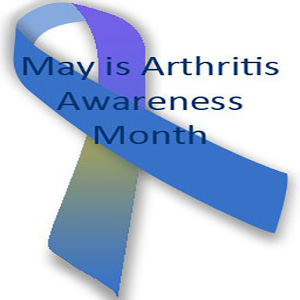 May is National Arthritis Awareness Month
May is National Arthritis Awareness Month
By Brooke Smith, DPT
AZOPT Goodyear Clinic Manager and Physical Therapist
Do you or someone you know have pain in their joints? You may have symptoms of arthritis. Today, nearly 50 million Americans suffer from arthritis. Arthritis is often misunderstood as minor aches and pain associated with getting old. However, there are many different forms of arthritis that can occur at any age. Two-thirds of the population with arthritis occurs in people under the age of 65, including children. The three main types of arthritis are Osteoarthritis, Rheumatoid Arthritis, and Juvenile Arthritis.
Osteoarthritis (OA) is the most common form of arthritis and is characterized by progressive degeneration of the joint’s cartilage, causing bone to rub against bone. It most commonly occurs in weight bearing joints such as the hips, knees, and lower back. OA has also been known to affect the neck, small finger joints, the base of the thumb, and the big toe. Some of the symptoms include gradual development of stiffness within the joint, pain or joint soreness after overuse or inactivity, morning stiffness, and loss of motion/movement within the joint. Several risk factors can lead to the development of OA including obesity/overweight, history of joint injury, overuse, genetics, muscle weakness, and age. OA usually occurs later in life as a person ages. It is described as the “wear and tear” of your joints, and the older you are the more you have used your joints, putting them at greater risk for OA. However, older age does not mean OA is inevitable.
Rheumatoid Arthritis (RA) is a systemic disease characterized as inflammation of the joint lining causing pain, stiffness, warmth, and swelling that can occur throughout the body. RA is symmetrical, affecting the same joints on both sides of the body. RA affects nearly three times the amount of women than men and most commonly begins between the ages of 30 and 60 years old. RA has no cure and progression leads to development of rheumatoid nodules and joint deformities. Although there is no cure for RA, highly effective treatments exist including medications, physical therapy, physical activity, weight control, and maintaining good overall health.
Juvenile arthritis (JA) can have many different forms but is generally described as an autoimmune and inflammatory condition that can develop in children ages 16 years and younger. JA affects the joints like RA and OA; however, it can also affect the eyes, skin, and gastrointestinal tract. There is no known cause for JA, but it has been suggested that toxins, foods, allergies, or genetics can cause a child to develop the disease. Symptoms are similar to RA and OA and include inflammation of the joints, pain, and joint stiffness. It is important with JA that the entire family maintains a sense of calm and normalcy, as well as sticking to daily routines and comforting habits. It is also important to address emotions of sadness, anxiety, and anger the child may have to help maintain the attitude that “arthritis is something I have to live with but not what defines me”.
There are options, other than surgery, to help improve your symptoms like stretching, walking, strengthening, Tia Chi, and physical therapy. As a physical therapist, my goals in treating arthritis are to decrease the amount of pain, improve strength of muscles to increase stability around the joint, stretch muscles that are tight and might be hindering proper body mechanics, and improve joint protection. It has been shown in recent research that exercising is a valuable tool in decreasing the symptoms of arthritis. Some specific interventions that physical therapy might provide include modalities, braces and splints to protect joints, and hot or cold packs. A physical therapist will work with you to modify your daily activities and your environment to provide pain relief and improve function. Physical therapy will improve flexibility in your hamstrings, quads, calves, and hip flexors while strengthening the muscles around your knee, hip, and ankle. Your appointments may also include coordination and balance activities.
If you or someone you know is experiencing any of the signs and symptoms discussed above, or has been diagnosed with a form of arthritis, you might think about scheduling an evaluation with a physical therapist to address your symptoms. You can contact AZOPT at (623) 242-6908 if you have any questions or concerns.
For more information, please visit www.arthritis.org.






